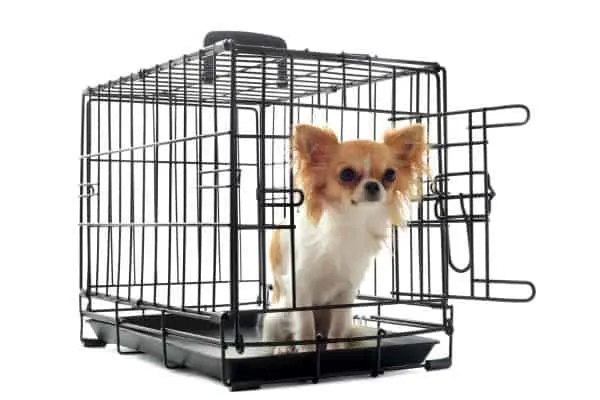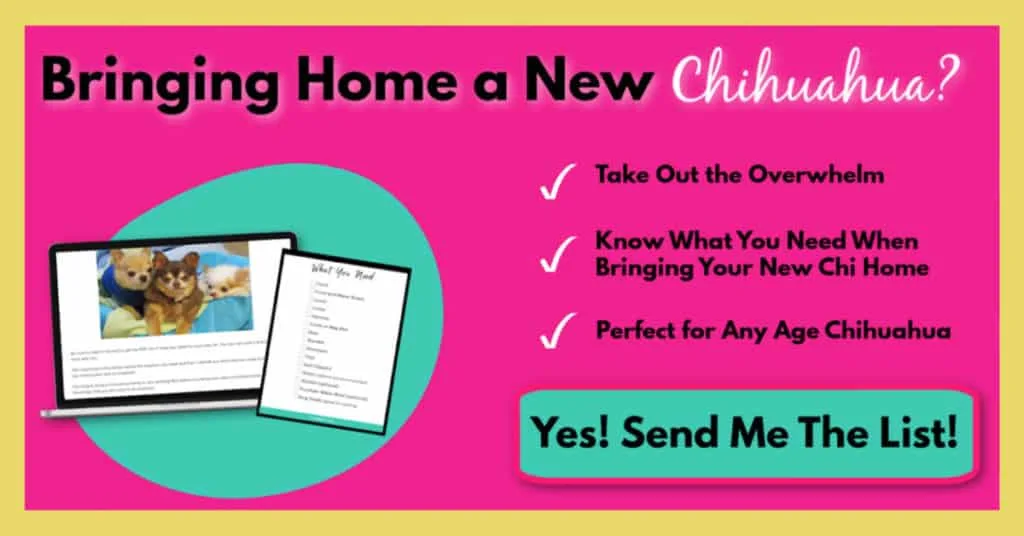
There seems to be so much controversy about crate training. Some people think it’s cruel, and others think it’s the only way to keep a dog.
I understand how it got a bad name considering dogs in puppy mills are often kept in crates and cages 24 hours a day.
But that’s not what we are talking about here. We are talking about training your dog to think of his crate as his own little den, a place that is all his where he can go to be alone, relax or sleep.
Have you tried crate training a dog, but was overly frustrated with the results? Don’t worry; you’re not alone; countless pet owners feel the same way you do.
There is no need to fret! There is a very simple solution to your crate training problems! You won’t have to listen to that frustrating whining keeping you up all hours of the night. Now you can go to work with the comfort of knowing your pet is safe and content, no longer living in anxious fear that their owner left them, never to return.
Any Alternatives to Crates?
Now I do have to mention that not all dogs will take to crate training. In those cases, a playpen or a closed-off room (kitchens and bathrooms are often good choices) might be a better choice. I have a dog who totally freaks out if she even sees a crate. I won’t even try it with her because I know she is just too afraid of them for some reason.
Here are just a few alternatives to crate training to consider for your dog:
Fence Gates
Fence gates or baby gates are also good dog crate alternatives. It keeps your Chihuahua in a designated and safe area so they can stay out of trouble. It also helps cleaning up accidents easier. Remember, if you can’t use a crate, then sectioning a small section of the home off with a baby gate will be much easier to accomplish than dog proofing the entire home.
Doggy Playpens
This is actually what I used whenever I brought a puppy into my house. It gives them a little more space and freedom and it worked well for me.
Take Your Dog to Work
Some offices and workplaces allow you to take your dog to work with you. If this scenario is possible for you, then it is definitely something to consider if you can’t or don’t want to use a crate in the home. However, if you choose this alternative, make sure your dog is potty trained first.
Fenced In Yard
If you have a fenced-in yard, then this can be a good alternative to a crate. However, there are several factors you will need to consider. If your dog loves to bark, then this is definitely not a good option. It is also not the safest option when you are not home to supervise.
And I definitely would not recommend this for Chihuahuas or any small dog as there are too many prey animals who might want to make a meal out of them.
If your dog spends any amount of time outdoors, they need to have access to their basic needs such as food and water, and the weather needs to be good. They should not be left outside if the weather is too hot or too cold.
Dog Sitter
You can also choose to have someone look after your dog during the day while you are away. Sometimes the budget can get in the way of this option, however. So, you need to consider this carefully. A dog sitter can attend to the dog’s basic needs, provide company, and be there to care for him in the case of an emergency.
Doggie Daycare
Doggie daycare is also another option to consider. When considering this as an option, make sure to research the center thoroughly. There are typically restrictions on the age of the dog, the breed, the size, and behavior. If your dog doesn’t qualify, then you will have to consider one of our other alternatives. You also want to be sure house training is done prior to selecting this option.
Constant Supervision
Finally, if you can’t crate train, then you may have to resort to constant supervision to keep your Chihuahua out of trouble. This, of course, is just not always possible. That is why it is more beneficial to designate a small area of the home to your pet. You can set up a camera to keep an eye on them during the day. You can check in with them at any time, even when you are at work.
No matter which method or alternative you choose, you will find that each option has its own set of pros and cons, and you will need to seriously consider these before making a choice. If you have any questions or you are concerned about your dog’s safety and health, consult with your veterinarian for guidance on which options may be best.
Crate Training a Dog the Proper Way
The original purpose, and what is still considered a primary reason for dog crating is for housebreaking; dogs prefer not to soil their bedding if they can help it.
Step 1:
Introduce your dog to their new crate. Let them walk around it, explore it, smell it. Talk with them in a happy, cheerful tone; praise them for entering and moving around their crate.
Consider tossing small food rewards into the crate every so often. The purpose of this early stage is to show them the crate means good things. It is a ‘happy’ place.
Leave the door/entrance to the crate open at this stage; let them choose when to enter and exit.
DO NOT force them inside the crate!
Step 2:
Begin feeding your dog their meals inside the crate. This will cause them to make yet another pleasant association.
If your dog seems comfortable with his/her crate, you may start to close the door while they are eating (but if they notice, and begin to whine about being let out, open the door!
The very first few times you do this, open the door immediately after they are done eating.
Step 3:
Slowly begin to lengthen the ‘confinement’ periods during this stage of crate training and only do it while you are at home.
For example- 10 minutes, 15 minutes, 15 minutes, 20 minutes, 30 minutes, 40 minutes, etc. That is only one week’s’ worth of training periods, so it shouldn’t feel in any way overwhelming.
The Psychology of Crate Training a Dog
One of the main things to successfully crate train a dog, and consequently what so many pet owners fail to grasp, is understanding why a dog may become anxious around their crates when they are confined or when you leave them alone.
Dogs become anxious when their ‘pack leader’ leaves them in a confined area; they think either you are angry with them for some unknown reason, or you left them, and will never return.
This is why it is so very important to go about this process slowly and not further increase their anxiety by becoming agitated! You want the transition to be easy and smooth for them. They shouldn’t easily notice the duration you crate them is slowly increasing.
Repeat step 3 multiple times a day at first, always while you are home.
Step 4:
Once your dog is comfortable being left crated for an hour or so, you can begin leaving them crated while not at home.
Don’t suddenly leap into crating them for the standard 9-5 workday! Dogs, very much unlike cats, are pack animals; such a long duration is not natural to them. If you need to crate your dog while at work, be sure to move up to it gradually.
Think 8-9 Hours is Too Long to Crate Your Dog?
I won’t lie; this isn’t ideal. Especially for chihuahuas with their tiny bladders. Hopefully, you can come home at lunchtime, or have a dog walker come in. Or if you are going to be gone for long periods of time, keep your dog blocked off in a room with access to water, some fun chew toys and a potty pad, and just leave the crate in there with the door to it open.
Sometimes though, the crate is the only option you have.
If you think this is too long for dogs to be caged, that such periods are ‘cruel,’ please consider this: The average shelter animals spend 80% or more of their lives in a cage that is often considered too small for them.
Though this may be considered a long time to crate a dog, the conditions you are offering almost certainly far outweigh the potential alternatives (which could range from living out their lives without a family to death at the end of a syringe, or even ‘humane’ suffocation via gas chamber).

Make It Natural
The proper way to crate train a dog focuses on their already natural affinity as a den animal. Your dog’s crate should feel like a home, a refuge, a place for him or her to feel safe. It should feel comfortable, lined with soft bedding (a blanket perhaps; they shouldn’t be exposed to metal lining the bottom of the crate). Leave a favorite toy in the crate with them.
What NOT to do:
- Don’t crate your pet as a punishment
- Don’t associate the crate with yelling!
- Don’t bother or try to play with your pet while they are in their crate if it can be avoided; in many cases, they sought refuge to be left alone
- Don’t call from work and try to leave a voice message on your machine for them to hear. This will only serve the exact opposite effect you’re going for, increasing their anxiety and confusion
- Don’t make an enormous deal before leaving for long hours each day. This, again, will likely increase the chances of ‘separation anxiety.’ Rather act normal, like leaving is no issue to worry about and a mild occurrence. Try not to shower them with praise upon returning either, but rather treat your arrival home ‘matter of factly.’
Finding Success
Finding success and making it work are important when it comes to training your dog to do anything. Whether you are using a crate or one of the many alternatives we have offered up, there are several things you need to do to help ensure your puppy’s safety.
Toys
Leaving safe toys and interactive toys with your dog are good for keeping them busy and engaged for hours on end. They are less likely to find ways to get into trouble when they are occupied.
Go for a Walk
A good way to break up a monotonous day of crate training is by taking your dog for a walk. It is good to take a potty break, get some exercise, and let them stretch their muscles. It is also a good chance to bond with them and allow them to have some people time outside of the home.
Doggy Proof the Space
Before leaving your dog alone, make sure the space is doggy proofed. This means making sure that anything potentially dangerous is kept out of reach. They should be in an easy to clean area with a non-absorbent floor if you choose to use a crate alternative. Potty pads are also good to have while crate training dogs as well.
Overall, dogs are very social animals, and this kind of dog training can take a toll on them. They will get bored if they are left alone all day with nothing to do.
Owners make this last mistake constantly! Keep in mind: If not trained correctly, your dog can easily feel trapped and frustrated when crated.
Do you use a crate for your dog? Or have you tried, and it just didn’t work out? Leave a comment and let us know about your experience and what you think about crate training.
Be sure to read this post on how to crate train an adult dog too.



Jan Shaw
Monday 9th of November 2020
I crate trained my baby from the start she only weighed 680 grams At 10 weeks as I had 2 very active toy poodles that sometimes played a bit rough. She loves her space it’s her safe house she can go in or out as she pleases but she won’t allow the poodles to go in there! She sleeps in it every night and is locked in whenever I’m not home so I know she is safe. She has her nice bed and I cover with a blanket at night she has never been stressed or cried about it ever from day dot!
Cathy
Tuesday 10th of November 2020
That's great Jan!
Linda McKay
Friday 14th of August 2020
I usually leave a new puppy alone at night in the kitchen, however I have since read that this is not ideal as they are pack animals and is upsetting for them and for an owner with all the crying. The consesus, having gone online is a cage in the bedroom next to your bed. I reluctantly did this and I am so pleased I did. Deeks was perfectly fine from the start. There was no crying, I gave him a very small biscuit once he was in his cage. He was perfectly happy. I will stop using the cage once I can trust him in my bedroom not to toilet in the room. Indeeed I have a little bed in my room for when the cage is no longer needed. I don’t use the cage in the day time. If I have to go out in the day, I leave him in the kitchen. I always say "in your bed" and give him a little biscuit. That way he knows I’m going out and I will be back. He is now 5mths old and I have had no accidents in the house. I’ll give him a few more months and then I think he can use his lovely bed in my bedroom. I’m very pleased re using the cage in my bedroom, a lot better then in the kitchen on his own when he would have cried for quite a while.
Lorraine Maharaj
Wednesday 17th of June 2020
My Chichi will go out but doesn’t like tall grass if it wet grass willnt. Go out I hate it my husband loves her but Sep will b 1 yr old what to do
Cathy
Wednesday 17th of June 2020
We just make sure the grass is cut short. Plus if it's raining, I know they won't go outside. So I lay potty pads down for them.
Nancy Davis
Sunday 5th of April 2020
I generally am all for crate training but do caution I had two dogs, one a small yorkiepoo and a small chihuahua who, while jumping excitedly in the crate got their jaws caught in the metal bars and were literally "hanging" !Had I not been there they could have broken their jaws or worse.They were thrashing around to get free, it was frightening
Cathy
Sunday 5th of April 2020
Yikes, that's scary Nancy!
Judith White
Friday 3rd of April 2020
I have crated my 3 year old mixed chihuahua since she was 6 weeks old. Now she poops and pees and messes up her bed, she also does her business on my carpet, She goes out 10 to 12 times a day her sister was born the same time and she does not do that. Please help me I am very frustrated. She also barks with a bark collar on with out being a shock collar.
Thank You
Cathy
Friday 3rd of April 2020
If this is something that recently started, then something is definitely going on. Can you think of any changes you made when around the time it started? Is that about the time you put the bark collar on?